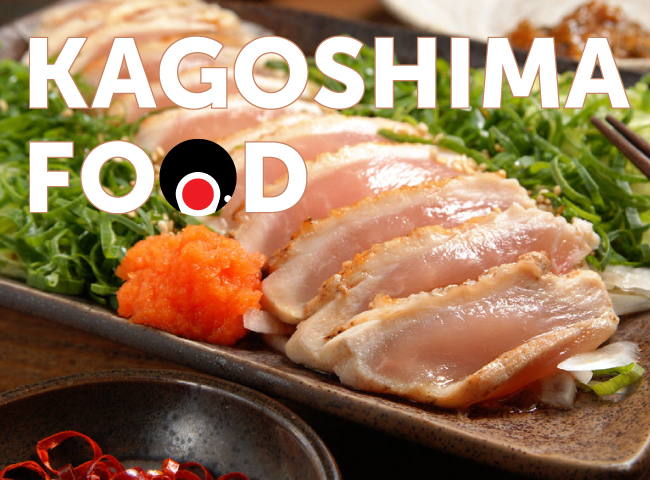What is Tempura? A Guide to Japan’s Golden Fried Glory
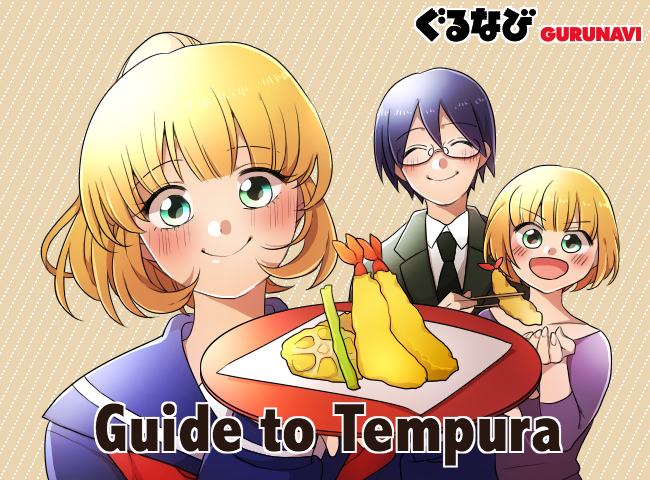

Tempura is a Japanese dish of battered and deep-fried fish, seafood, and vegetables. While tempura has a Japanese name and has been eaten in Japan for centuries, its roots go back to the influence of Portuguese merchants and missionaries during the 16th century who first introduced the concept of deep frying food in oil to Japan, bringing.
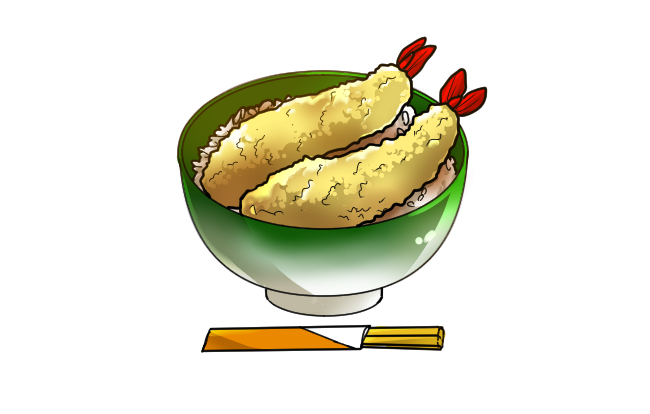
However, it wasn’t until later in the Edo period that tempura become popular in Japan, as frying oil was prohibitively expensive before then. It was first enjoyed as a street food snack, and then in the Meiji period tempura started to be served as part of a meal with rice or noodles. Nowadays, tempura can be enjoyed everywhere from casual chain restaurants and supermarket bento lunches, to noodle shops, upscale specialty tempura restaurants, and even in Japan’s traditional haute cuisine, kaiseki dining. Depending on the tempura restaurant, the tempura is either made with sesame oil, cottonseed oil, or the restaurant’s original oil recipe.

There are two main styles of Japanese tempura, Kanto style and Kansai style, each using slightly different ingredients and served with different condiments. In the eastern Kanto region of Japan, tempura is made with both seafood and vegetables and is fried in sesame oil until it becomes golden in color. It’s typically served with a shoyu-based dipping sauce. In the western region of Kansai, however, tempura is made primarily with battered vegetables deep-fried in a neutral oil and served with salt. Tempura, however, remains to be more popular in the Tokyo area than Kanto area like Osaka.
How to Cook Japanese Tempura
Tempura Ingredients
The most important component when it comes to how to cook tempura is the batter. Traditionally, this consists of ice cold water, flour, and egg yolks; however modern variations may also include soda water, baking soda, cornstarch, or potato starch to contribute to the crisp texture. Almost anything can be added to this batter, from seafood such squid, prawns, and fish to vegetables like kabocha pumpkin, asparagus, eggplant, mushrooms, and the tender sansai spring greens such as fuki. Some of the more unusual possibilities include nuts and herbs like gingko nut, chestnut, and myoga ginger, as well as premium ingredients like uni (sea urchin) wrapped in a shiso (perilla herb) leaf.
How Tempura is Prepared
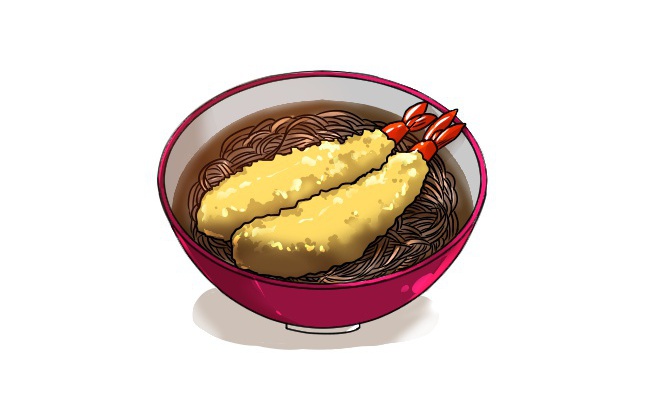
To prepare tempura, the batter must be freshly mixed, using cold water, and left slightly lumpy, with plenty of air bubbles trapped in it to give the batter a crisp texture when fried. If the batter settles and goes flat, it is tossed out and a new batter is prepared. Ingredients are cut into specific shapes that allow them to cook evenly. They are then dipped into the batter to create a thin, light coating that will fry quickly.
The type of oil used affects the temperature at which the tempura can be fried, as different oils have different smoke points. The Kansai area favors neutral oils such as vegetable oil and cottonseed oil that give the tempura a blond color when fried, while the Kanto area favors a blend of sesame oil that gives the tempura a more golden color. Other types of oil include rice bran oil, a premium oil used for cooking that has a very high smoke point, allowing the tempura to fry quickly without becoming soggy.
There are many types of tempura. Vegetable and seafood can be chopped into small pieces can be mixed with the batter, and gathered together and dropped in the oil to make "kakiage". Tempura with aonori in the batter is called an isobeage.
Tempura Sauces and Condiments
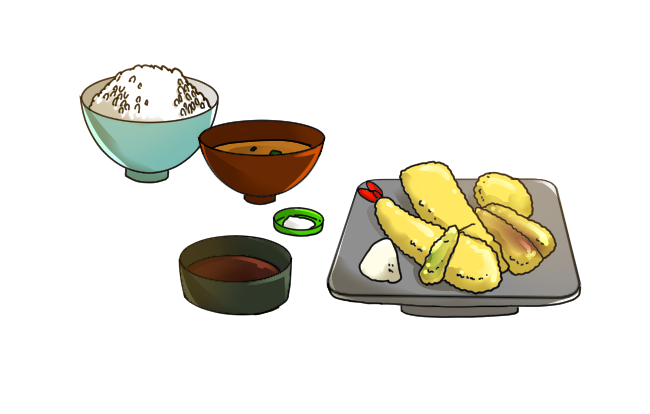
The sauces and condiments served with tempura varies depending on the location. For example, in Kansai, tempura is served with salt—ether plain sea salt or aromatic salts flavored with matcha, sansho pepper, or nori seaweed. In Kanto, tempura is served with “tentsuyu”, a dipping sauce made from dashi broth, mirin, and soy sauce. Tempura can also be served “oroshi” style with grated daikon radish and ponzu, a citrus and soy-based sauce.
Where and How to Eat Tempura
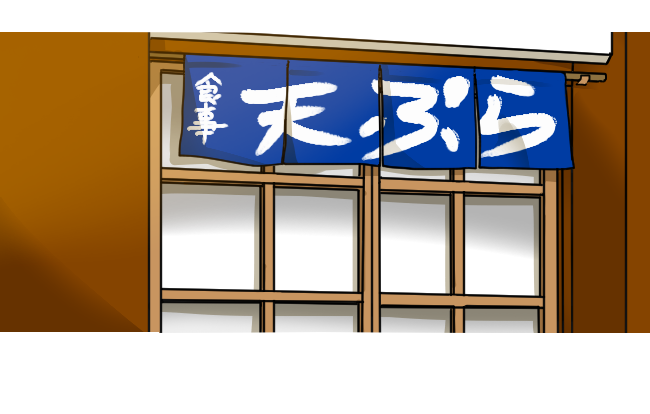
Although tempura started as a street food, there are a number of ways to enjoy tempura as a full meal. One way is in tempura donburi, or “tendon”, featuring a bowl of steamed rice topped with freshly fried tempura. The style of tempura used may vary from ebi-ten (shrimp) to ika-ten (squid) and kakiage, a style of tempura featuring chopped seafood and vegetables fried in a small cluster that looks like a bird’s nest. It’s also popular to eat tempura accompanied by a side noodles, such as soba buckwheat noodles or udon flour noodles. The noodles can be served either hot in broth or chilled on a traditional bamboo basket with noodle dipping sauce. When served as part of a teishoku meal, the main tempura entree is accompanied by a bowl of rice, soup, Japanese pickles, and other small side dishes.

Tempura can be found in all kinds of Japanese restaurants, from Michelin-starred establishments to casual eateries. Tempura specialty restaurants called “tempura-ya” offer tempura as their main focus, while casual shokudo restaurants and cafeterias offer various Japanese dishes, including tempura, at an attractive price point. For restaurant quality tempura at home, many people visit the depachika, a food hall offering a wide variety of dishes sold deli-counter style in the basement area of most department stores.
Try the Crispy Perfection of Japanese Tempura Served in Many Ways
Now that you’re no longer wondering, “What is tempura?”, you’ll know that there’s an endless array of ingredients that can be used, and ways to eat it. Whether you try tempura with noodles, over rice, at a specialty tempura restaurant. It’s a great choice for an excellent meal in Japan. Browse Gurunavi’s restaurant listings to find a tempura restaurant near you!









